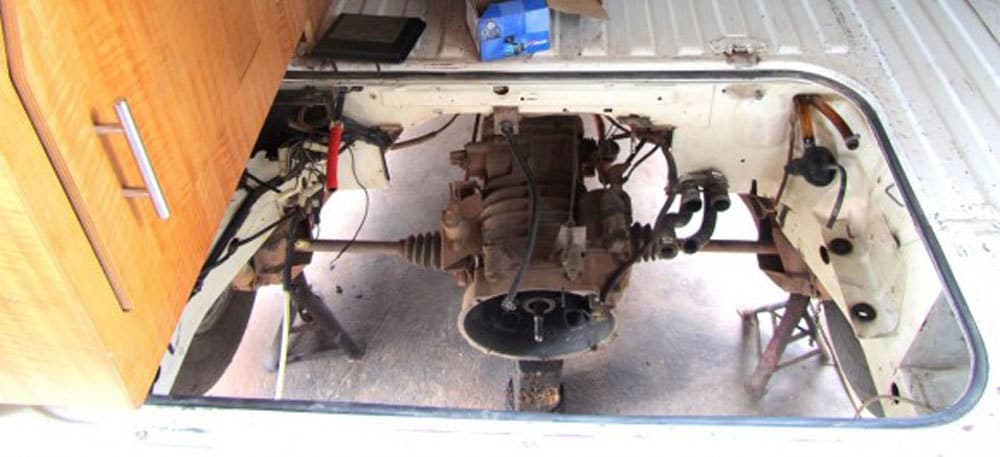The forklift driver carefully maneuvered the arm in front of Nacho’s sliding door. The engine hung idly from a chain as the driver used the controls to square up the arm with the opening in the side of the van. Just then the skies opened up and Bangkok was engulfed in a thunderous downpour. Water immediately gushed from the middle of our rain gutter, drenching our maple floor. Things got tense quickly. With one hand I tried to divert the flow of water away from our floor, while the other held the rubber tire in place on our living room floor so that our new engine could be set down without gouging anything.
“Watch the cabinets! A little higher! Okay, set it down!” Nobody spoke any English, so I might as well have been yelling Shel Silverstein poems.
“Did you hear about Ticklish Tom? He got tickled by his mom! Wiggled and giggled and fell on the floor! Laughed and rolled right out the door!”
About a year ago when we arrived in Tierra del Fuego, Nacho’s engine started idle surfing worse than usual. At idle, the engine would cycle between 800 and 2,000 RPM repeatedly. Sheena would sit in the passenger seat and imitate the sound so as not to go crazy herself.
“Reer…REER…reer…REER…reer…REER…”
“Sheena, get ahold of yourself! Come on now, my love, snap out of it!”
“Reer…REER…reer…”
Normally I would simply adjust the throttle position switch or the air mix screw, or else replace the Temp II sensor to fix this. This time, the problem remained. Upon removing the throttle body it became clear that it was too worn out to any longer control the air flowing through its various gaps. We idle surfed our way to Buenos Aires, Kuala Lumpur, and all throughout Southeast Asia.
I began to worry about our engine, so I looked to online forums for reassurance. “These engines are great—they’ll last upwards of 190k miles,” they would say. At over 200k miles, Nacho had the heart of a smoking octogenarian.
In Northern Thailand there were two occasions when the roads proved too steep for us to drive up, and we were unable to proceed. We had to back down the hills and find other ways to our destinations. This happened several times in the Americas as well, and we began to feel nervous for our own safety as the Himalayas loomed closer. It seemed Nacho’s 5,800lb FUPA was no match for our 95 horsepower smoking octogenarian engine.
As I sat in Sukothai, Thailand replacing every one of our engine wires after they were melted into a ball by a near engine-fire I cried uncle. Nacho needed a new engine. It just so happened that we knew a guy who knew a guy. Meet Pat: our Thai Volkswagen ambassador and knower of all things important. He selflessly offered himself up as our engine swap guru.
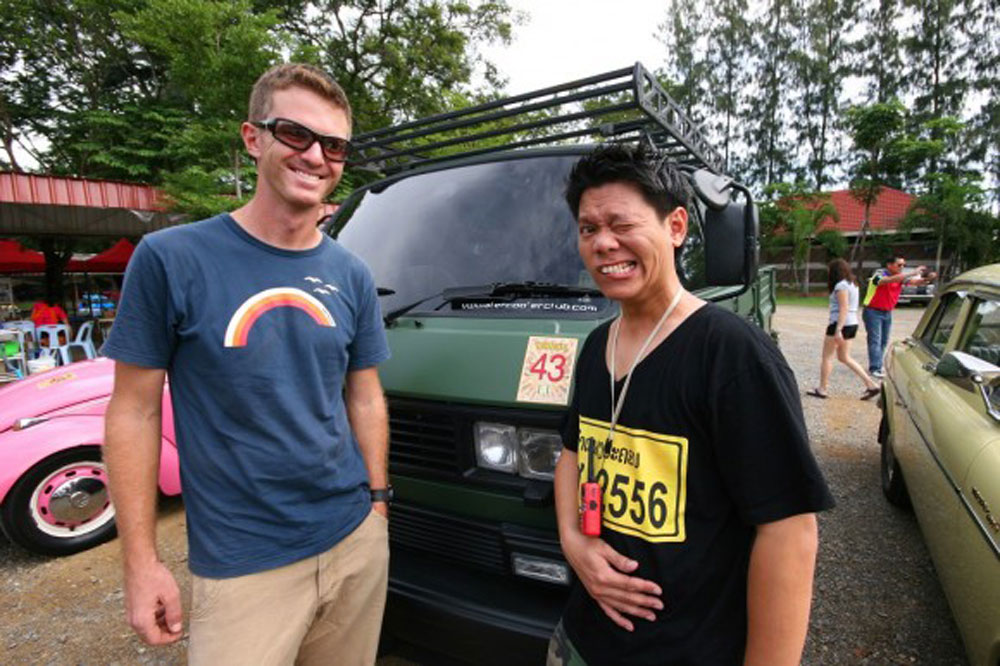
Pat quickly sprung into action by contacting a garage just outside of Bangkok that specializes in, get this, putting Subaru engines into Volkswagen Vanagons. The garage has done around 50 conversions already, and with great success. And cheap. Everything was set up—all I had to do was show up with an engine. The swap would take 10 days.
Without our trusty steed, we’d need a place to stay. Rather than paying double price for a seedy hostel, we opted to pay half price for a sweet apartment of our own. We would do the engine swap while using the apartment as our headquarters for publishing our first book. At the end of the stay we’d ship out for India. It would be perfect.
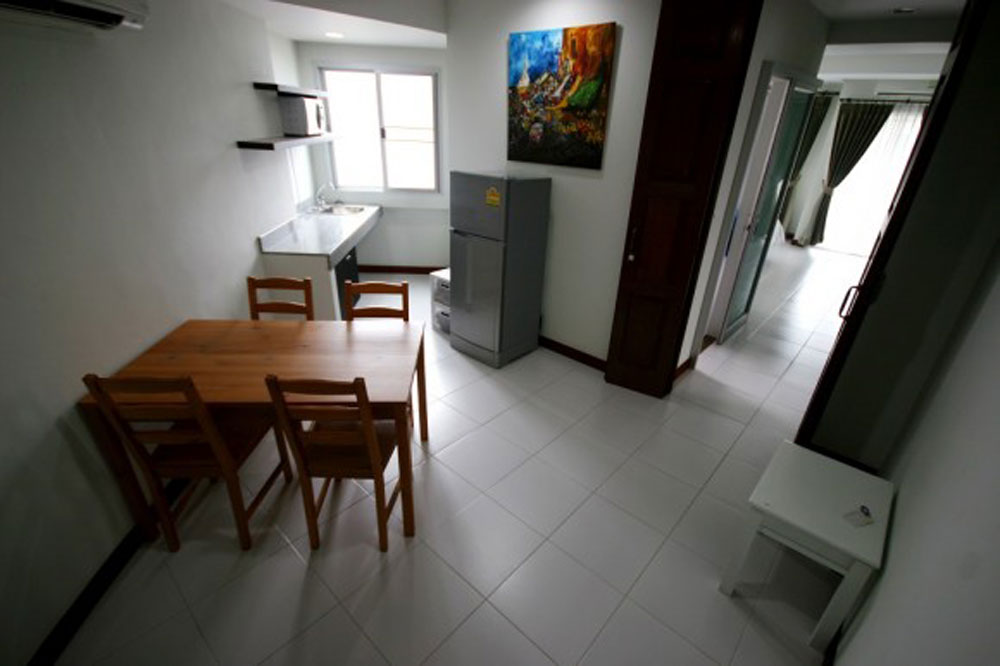
First things first: it was time to find an engine. But where to find a Subaru engine in Bangkok? Simple, Pat assured us. We’d simply go to the place that sells Subaru engines. Bangkok has everything.
Pat swung by and I followed him in what would be the first of several long trips to various places around the city. We wound our way through highways and surface streets to the autoparts district, and found the place with dozens of Subaru engines stacked atop each other. Pat had called ahead, so they had already pulled down two EJ25 engines for us to choose from. I pulled out my compression tester and we went to work.
The first engine fired right up, but sounded a little rough. I did the compression test and found one cylinder to be a little bit low. The next engine purred like an abnormally silent kitten, and tested at 152psi all the way around. Perfectly balanced, and with only 62k miles on it. Bingo!
Due to very strict emissions and mileage allowances in Japan, car owners must frequently replace their engines or buy new cars to keep up. This creates a surplus of lightly-used engines which must be disposed of. Thailand has a program to import these engines at a very low cost; our engine was imported as a part of this program.
I paid the man and he loaded it into Nacho’s living room while the sky released a flash flood onto Nacho’s maple floor. Once the rain subsided I lashed it down with a ratchet strap and we were GTG (good to go).

We had always heard rumors about performing engine swaps in Thailand. It was meant to be very cheap. A standard conversion to an EJ25 engine stateside typically runs somewhere in the neighborhood of $9,000 all said and done, often more. We’ve even seen cases where the van owner does the work himself, and still spends over $10,000. We had heard that in Thailand it could be done for around $3,000. But what of the workmanship? Would this be a beer can and bubble gum job?
When we got to Bangkok a couple of months earlier and met with the VW Club of Bangkok, we were amazed to find that almost every one of the T3 vans had been converted to Subaru engines, and everyone loved them. We were sold.
e left the engine store and drove to the outskirts of town to Soonthorn Garage, where Nacho would live for the next 10 days.
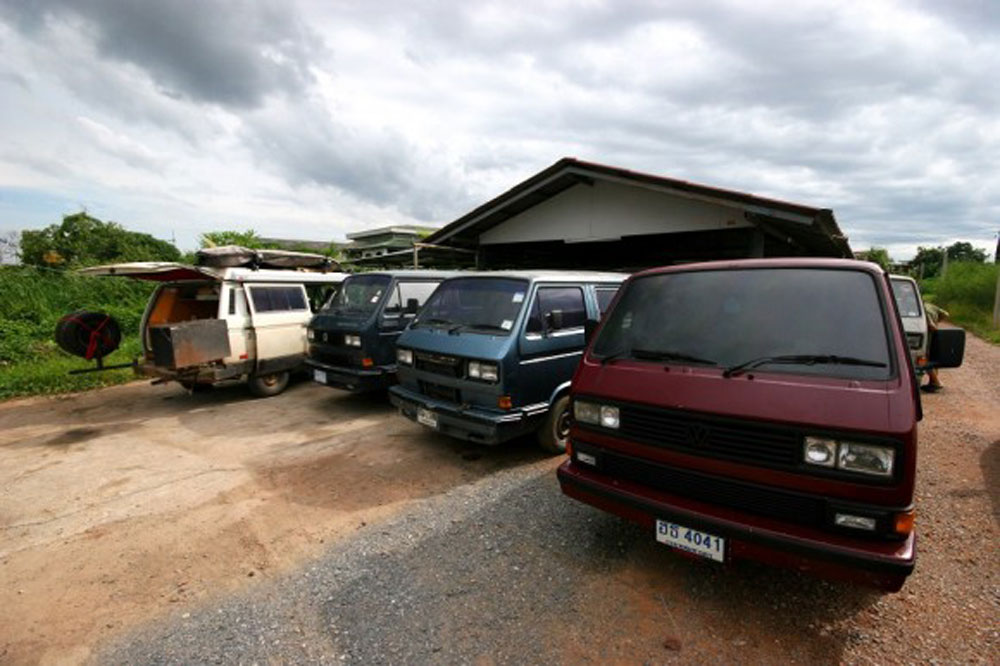
A couple of days later, Pat picked me up at our apartment in Bang Chak and drove me out to the garage to check on the progress. The mechanic had removed our poor old engine and we found it in the middle of the floor alongside its replacement. The old engine looked sort of like a dead hobo tangled up in a fishing net, while the new engine looked like a freshly manufactured Kalashnikov killing machine. Still, I found myself sitting and staring at the old engine, remembering all we’d been through. I’d pretty much replaced or fixed everything on that old engine. I knew it inside and out. I could almost hear its surfing idle.
REER…reer…REER…reer…
We dropped off a new set of head gaskets and other assorted doo-dads that I’d ordered from the States so that our engine would be totally fresh. I handed a new clutch throwout bearing to the mechanic, took one last look and we went on our way, back to the city to write.
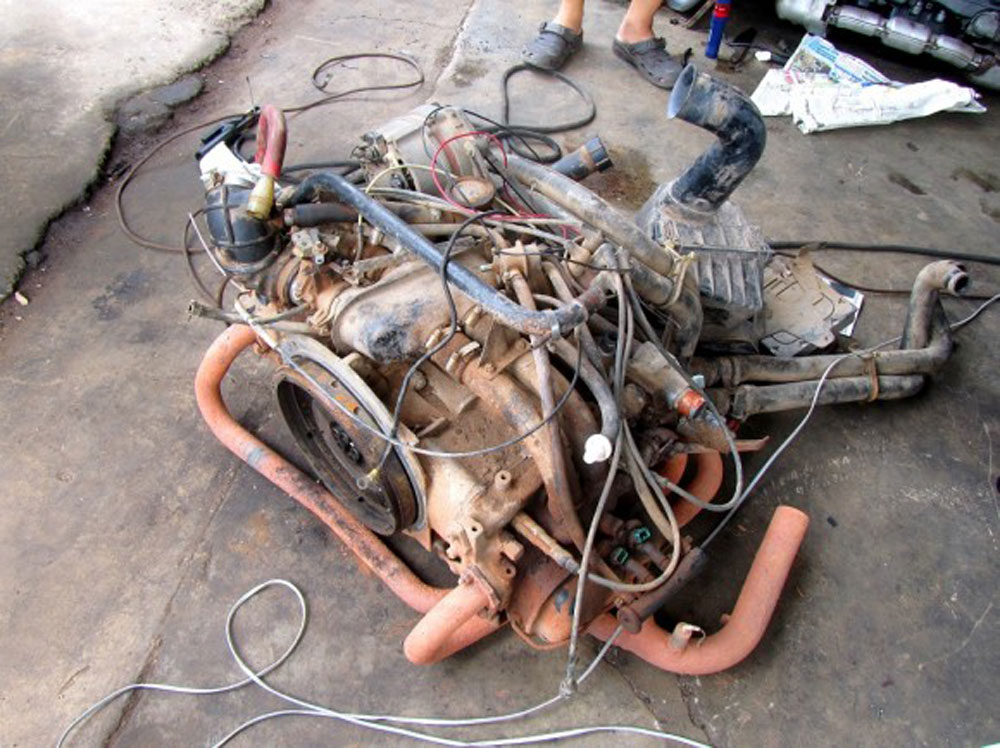
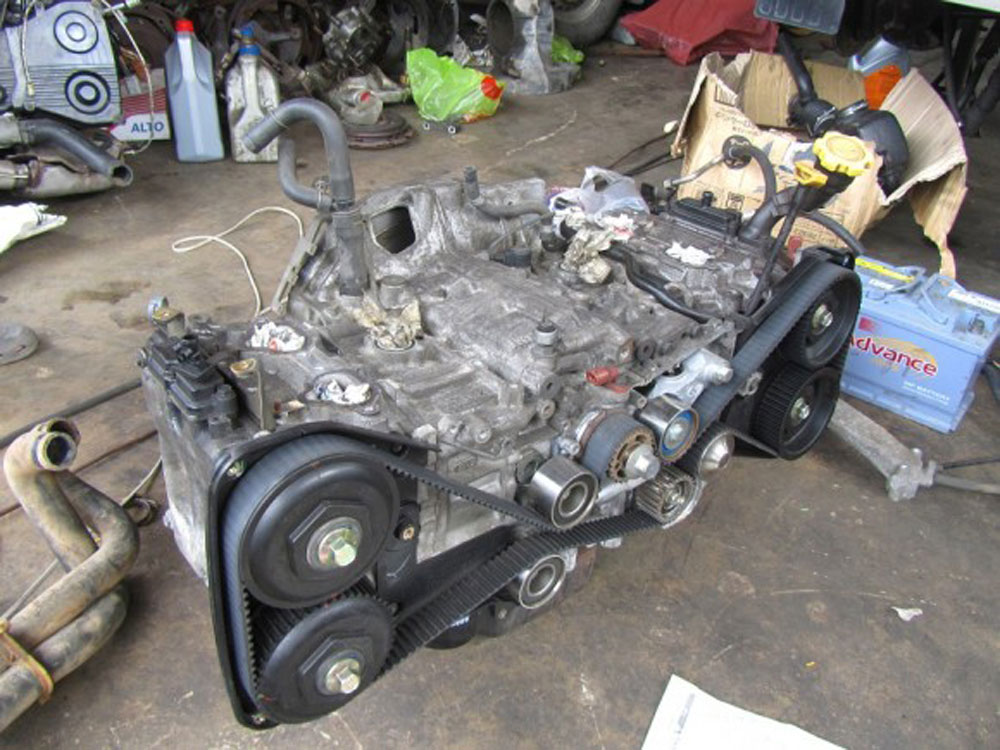
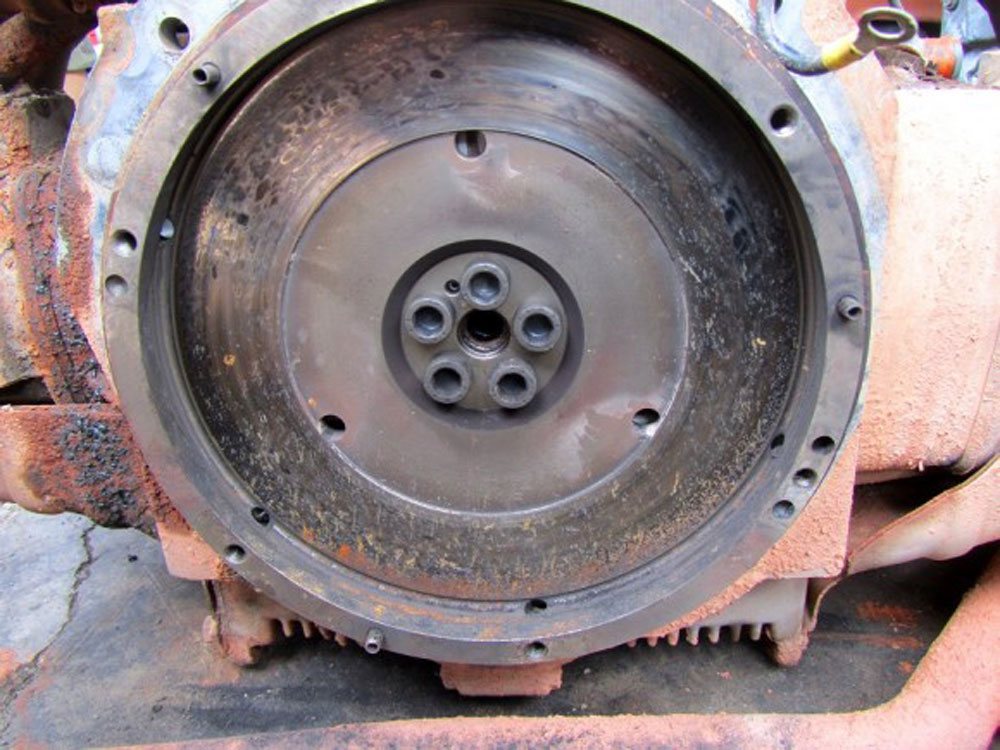
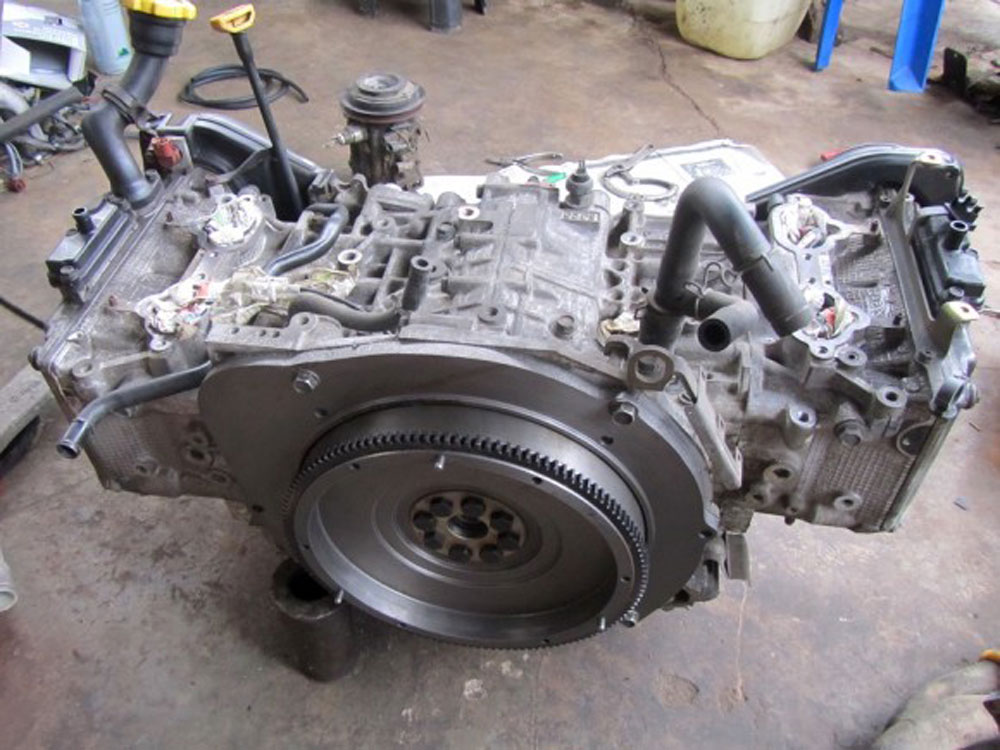
Back in the city, Sheena and I fell into a routine of writing in the mornings, and then heading out for lunch. Our apartment was situated next door to a pharmaceutical factory, and every day a group of street food carts would congregate outside to feed the workers. This was our usual lunch for the duration of our stay in Bangkok. In the afternoons there was more writing, and then in the evenings we’d head out. Sometimes we’d go to our neighborhood night market to buy food to bring back for a night in, while other nights we’d head out on the town. You know, to the Italian Film Festival, or to the mall, where you can buy a Hello Kitty backpack or a $1.1 million dollar car.


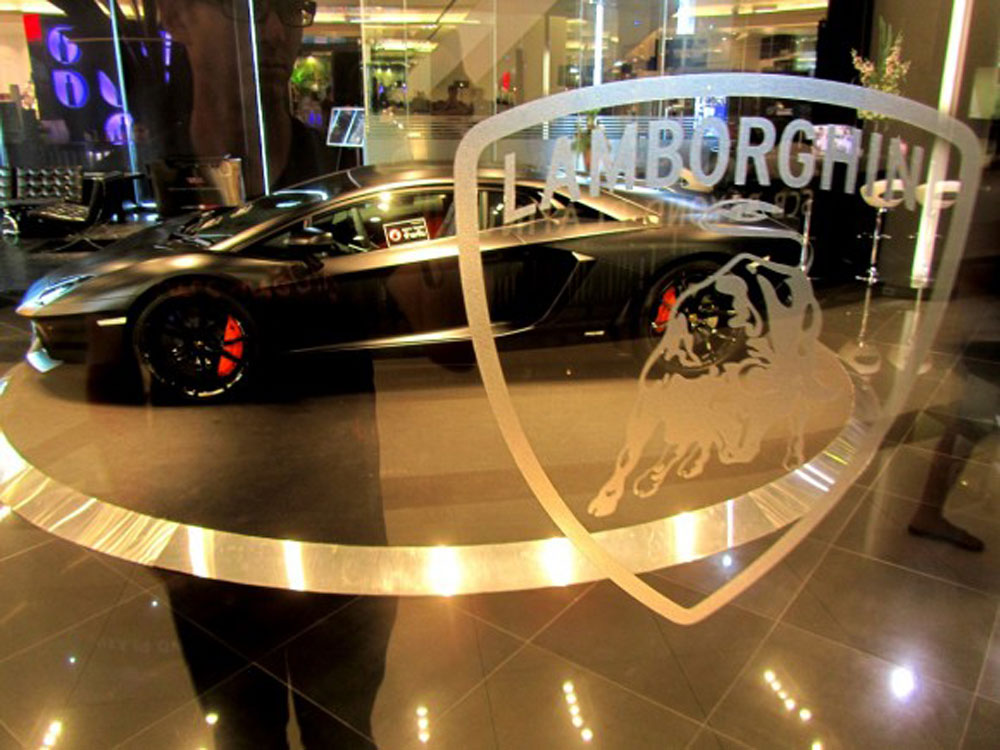
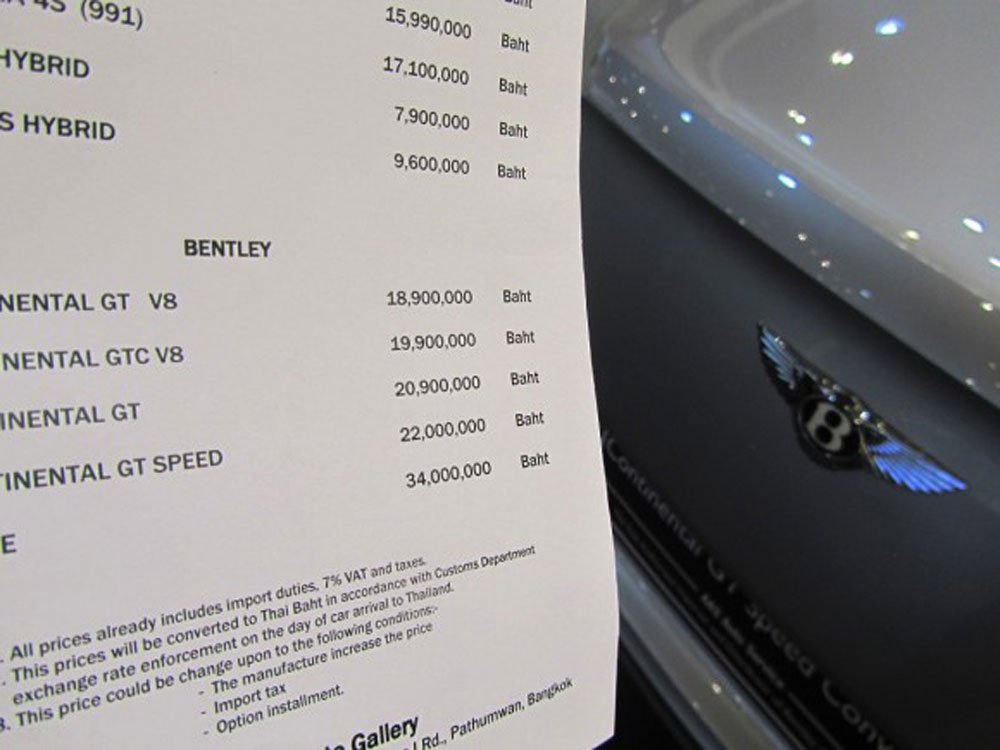
The mechanic called on the final day and mentioned that I’d need a new starter. Thinking that I knew best, I ensured him that our starter was fine, and that I’d replaced it in Colombia as a part of our mass car parts smuggling operation. He begrudgingly agreed to keep it, and told me I could come check out Nacho’s new heart.
The ever-generous Pat took another afternoon off of work to pick me up at the apartment and bring me the 40 kilometers out to the garage. When we arrived Nacho was out having some final welding done for the modified bumper mount. The old mount used the engine brace to support the weight of the bumper, but the engine brace had been moved to accept the new engine, so some handy work was required. Within a few minutes we heard the faint purring of a smoother-than-usual baby kitten, and knew it must be little Nachito.
I was ready to go. It was test drive time. I walked over to Nacho, hopped in, and turned the key. The starter emitted a shrieking noise like a dying hyena, and then remained engaged with the flywheel, producing a deadly grinding noise. I killed it and shot a glance at the mechanic. He looked uneasy. I hit the key again and heard nothing but a light zipping noise.
As it turns out, the mechanic knew what he was talking about. My starter had 9 teeth, which engaged perfectly with the VW flywheel. The new Subaru flywheel required a 10 tooth starter, meaning that the old model wouldn’t work. The old starter succeeded in a few starts, but then the mismatch in gears finally sheared off the head of the starter motor gear. Pat brought me home.
The next morning I took a taxi onto the motorway, where I was picked up by Pat’s company van on its way to work. I waited at Pat’s work until he was finished with his meeting, and then the van took us to the garage. Having arrived at lunch time, I went with the chauffeur and workers who had accompanied us in the van to the food stall down the road for some fried rice and congealed-blood soup. And then it was time.
We walked to the garage and found Nacho ready to go. I turned the key and the engine jumped to life, and then assumed a low purr. In fact, the engine idled so silently that from the driver’s seat it was impossible to tell if the car was even running. No vibration, no sound; the engine was perfectly balanced and perfectly tuned. The only evidence of life was seen by reading the tachometer.
Driving the van was like a dream. When I pulled out of the driveway it was clear that things had changed. Stepping on the gas no longer produced a delayed, slow acceleration, but rather a sharp and powerful forward jump. I pulled onto a country road and gunned it. The van accelerated like a small performance car. I could feel myself pressing back into the seat from the acceleration. On the motorway back to the apartment I decided to see how fast it’d go. I pressed the accelerator and effortlessly reached 90 miles per hour, but thought better of it and backed off. Nacho’s still morbidly obese, after all.
Nacho was a power machine! The Chuck Norris of slightly ugly 1980′s camper vans!
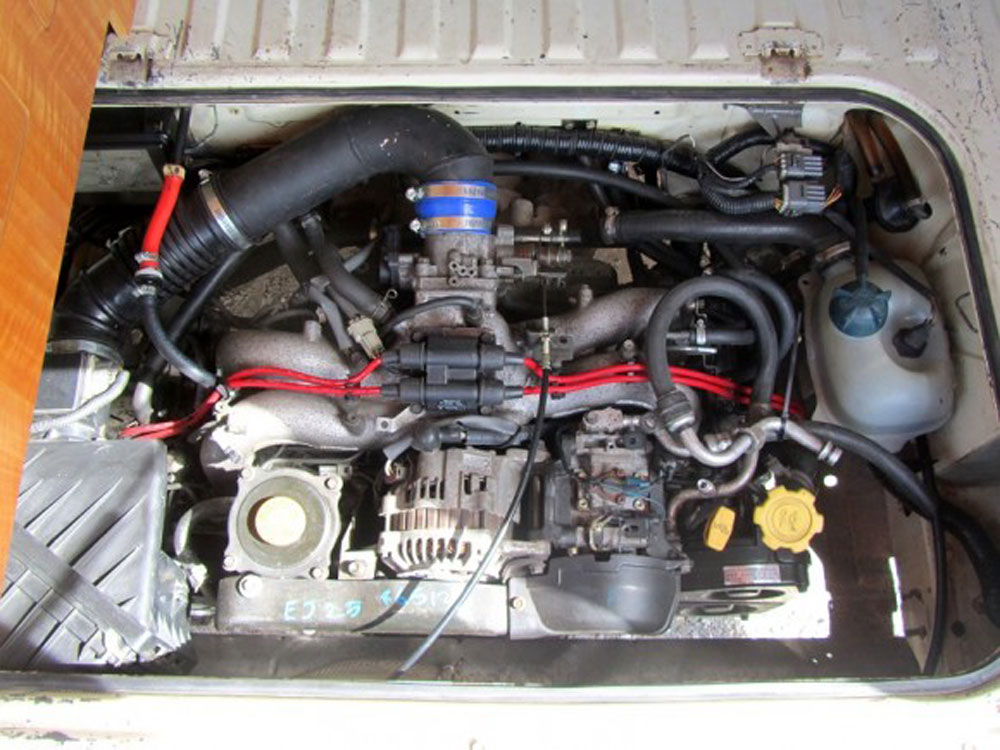
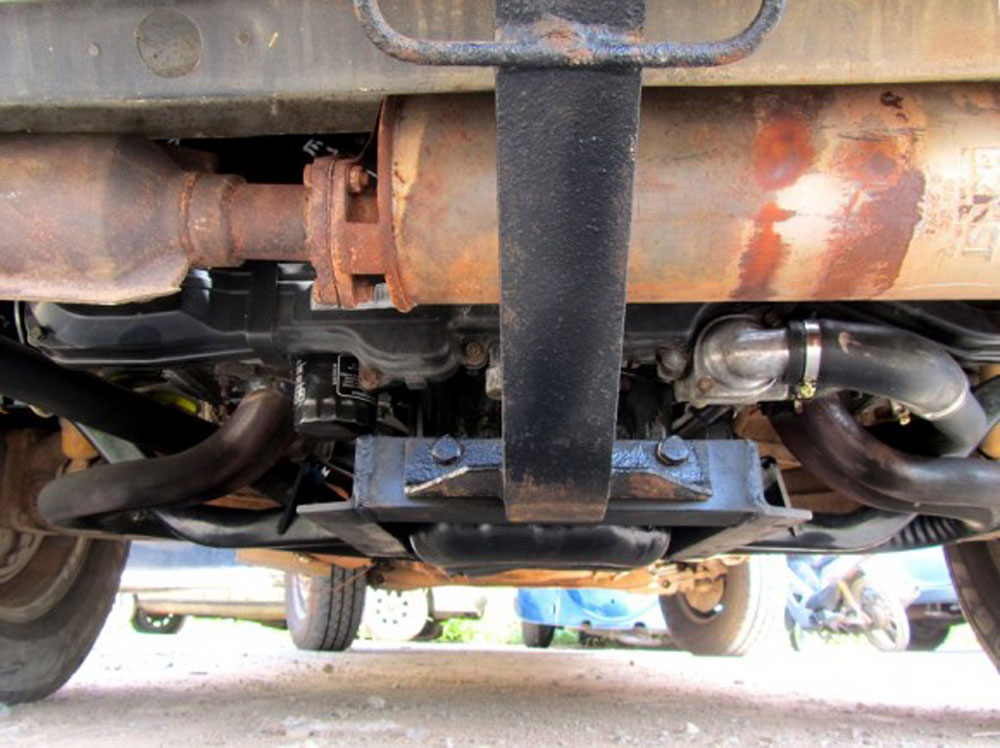
THE VERDICT
Old engine, by the numbers: 2.1L Volkswagen Wasserboxer
Year mf’d: 1986 Power: 95hp Torque: 117 lb-ft Fuel economy: 17mpg – highway New engine, by the numbers: 2.5L Subaru EJ25D
Year mf’d: 1997 Power: 165hp (74% improvement) Torque: 162 lb-ft (38% improvement) Fuel economy: 21mpg – highway (24% improvement)
PROBLEMS?
The van drove like a dream right from day one. We had heard issues with the old radiator not being able to cool the engine adequately, but our new engine runs cooler than our old one. When our engine speed gets over 4k RPM the engine cuts in and out. This is a safety feature, and I believe that it’s meant to be overcome by having a neutral sensor to tell the engine that it’s not in neutral, which the Vanagon doesn’t have. I’m now in the process of building a neutral sensor to overcome this, but it’s not a problem for daily driving. The one downside I can think of is the loss in ground clearance caused by a low-hanging oil pan. This can be remedied by a $400 low profile oil pan, but I think I’ll wait until I get home to swap it out.
THE COST
This is what everyone really wants to know. Remember that the average cost for this conversion back home is around $9k, and often involves lots of DIY work. This conversion was completely hands-off, turn-key, and was performed flawlessly.
Engine + wiring harness: $910
Gaskets/seals:$290
Speed sensor: $69
Labor, misc parts: $2,436
TOTAL: $3,705
And for this extreme bargain (according to me), or hefty frivolity (according to Sheena), I have promised my wife that I will use Nacho as my daily driver for the next forty years. I was already planning to do so, but seriously, Sheena. For this steal of a price you damn me to a future of driving the most awesome car in all the world, a future of lunchtime parking lot siestas, of style and luxury and power? I bite my thumb at you, dear Sheena, for I am the winner here. I am biting my thumb now, and it tastes like sweet victory.


